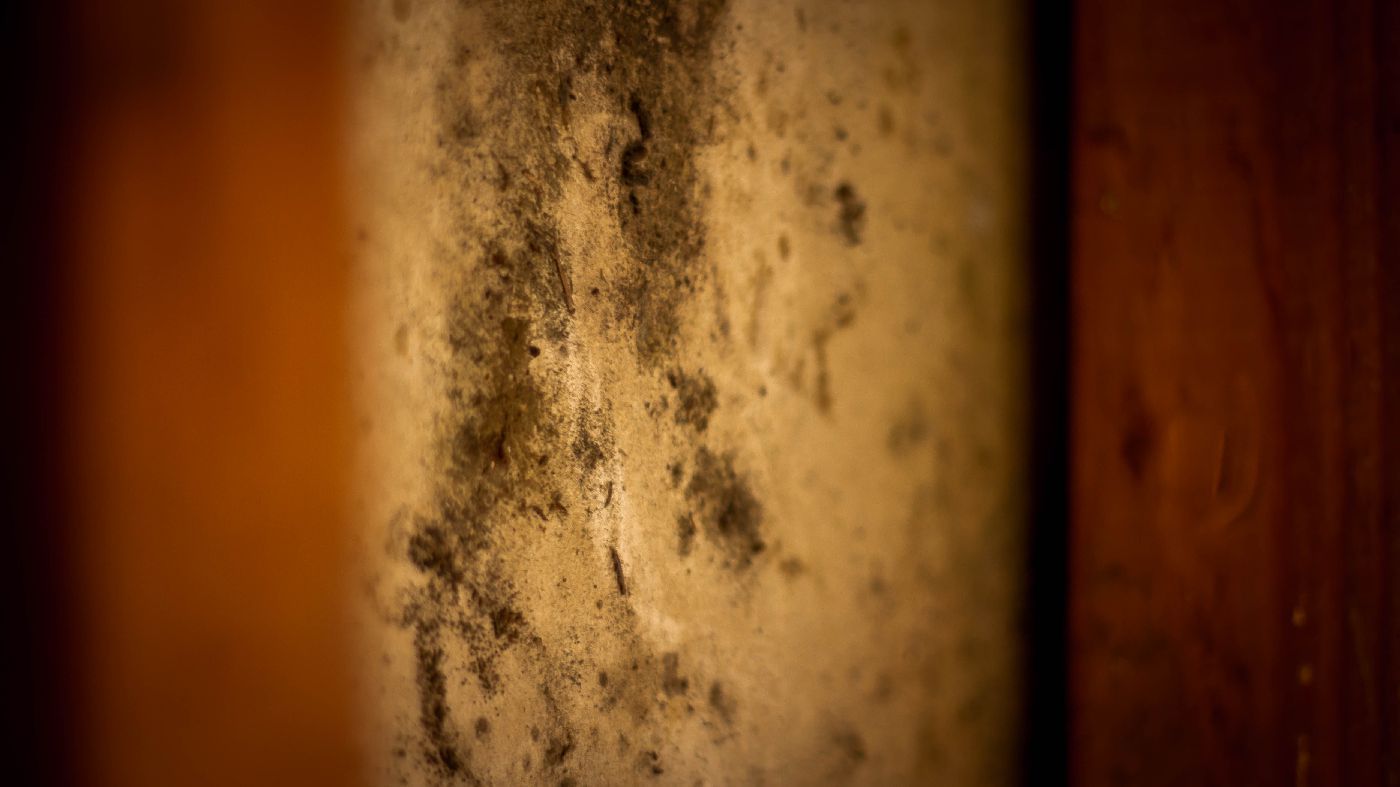Mold Growth After Water Damage: What Homeowners Need to Know

Why Mold Loves Water Damage (And How It Becomes Your Unwanted Houseguest)
Mold is a lot like that one cousin who “just needs a place to crash for a few days”—before you know it, it’s taken over your basement, your bathroom, and possibly your sanity. If you’ve recently dealt with water damage, your home is a five-star resort for mold spores.
When water damage strikes—whether from a broken pipe, a leaky roof, or a full-blown flood—it only takes 24 to 48 hours for mold to start growing. And once it starts, it doesn’t stop unless you give it a very good reason. That’s where mold and water damage repair comes into play.
How Water Damage Leads to Mold Growth
- Moisture + Organic Material + Time = Mold Heaven: Mold needs three things to thrive: moisture, a food source (like wood, drywall, or even dust), and time. Water damage delivers all three.
- Humidity Lingers Long After the Water's Gone: Even if you’ve mopped up the mess, that moisture can remain trapped behind walls or under flooring, creating a perfect breeding ground for spores.
- Poor Ventilation and Delayed Drying Are Fuel to the Fire:
Without professional drying equipment or good air circulation, mold sees your home as prime real estate.
Water damage is bad, but
mold growth after water damage can be worse—and far more expensive to repair if you wait too long. Mold can impact your home’s structure, resale value, and your family’s health.
The Health Risks of Mold in Your Home: More Than Just a Musty Smell
If you’ve ever caught a whiff of that "old basement" smell, congratulations—you’ve already met mold. But what you smell is just the tip of the sporeberg. Mold doesn’t just make your home smell funky; it can also impact your health in serious ways.
Common Health Effects from Mold Exposure
- Allergic Reactions: Runny nose, sneezing, red eyes, and skin rashes are common responses to mold spores.
- Respiratory Issues: People with asthma or lung conditions can experience worsening symptoms, wheezing, or difficulty breathing.
- Infections: In rare cases, mold can cause infections, especially in individuals with weakened immune systems.
- Cognitive Symptoms: Some reports suggest that long-term mold exposure might affect memory, focus, and mood.
Even if you’re tough as nails, mold can affect kids, elderly family members, and pets. If you’ve had water damage, don’t wait until someone in the house starts sneezing like they’re in a pepper factory—get a
mold inspection and removal specialist to check things out.
Mold Inspection and Removal: What to Expect (And Why You Shouldn’t DIY)
A quick YouTube search might make you believe mold removal is a DIY job that only requires a spray bottle of bleach and a motivational playlist. But in reality, mold is sneaky—and dangerous when handled improperly.
Why You Should Leave Mold Remediation Services to the Pros
- They Know Where to Look: Mold doesn’t just grow in visible spots—it loves lurking behind walls, in HVAC ducts, and under floorboards. A professional mold inspection and removal service will locate hidden colonies.
- They Use Specialized Equipment: Thermal imaging, HEPA filters, and air scrubbers aren’t standard tools in your average homeowner’s toolkit.
- They Prevent Spread: Improper removal can release millions of spores into the air, causing mold to spread even faster. Professionals contain the area and keep the rest of your home safe.
- They Fix the Source: Removing the mold is only half the battle. You also need to address the underlying moisture issue—something
mold and water damage repair pros are trained to do.
What a Professional Mold Remediation Process Looks Like
- Inspection and Testing: A thorough check of the property, sometimes involving air quality testing.
- Containment: Isolating affected areas to prevent spores from spreading.
- Air Filtration: Using HEPA filters to clean the air during the process.
- Removal: Carefully removing contaminated materials like drywall, insulation, or flooring.
- Cleaning and Sanitizing: Using safe, effective solutions to kill remaining spores.
- Restoration and Prevention: Drying the area and fixing water damage to prevent future issues.
Preventing Mold After Water Damage: Pro Tips Every Homeowner Should Know
Once mold has moved in, it’s hard to evict. The best approach? Don’t let it in at all. After a water event, acting fast and smart can save you thousands in repairs and keep your home mold-free.
Mold Prevention Tips After Water Damage
- Dry Everything—Fast: Use fans, dehumidifiers, and open windows to ventilate and dry out affected areas within 24-48 hours.
- Check Hidden Areas: Look under carpets, behind walls, and inside cabinets for lingering moisture.
- Don’t Skip the Professionals: Bring in experts for mold and water damage repair. They’ll ensure everything is truly dry and safe.
- Seal and Insulate: Properly seal windows and doors and insulate pipes to prevent future leaks.
- Regular Maintenance: Clean gutters, inspect your roof, and keep your plumbing in check.
When in Doubt, Call for a Mold Inspection
Sometimes mold hides in plain sight—or in totally hidden places. If your home just smells off or you’re worried after a past water issue, call for a
mold inspection and removal. It’s peace of mind, and your sinuses will thank you.
Call the Pros: Proven Restoration Has Your Back in Houston, TX
Ready to Kick Mold to the Curb? Let Proven Restoration Help!
Mold doesn’t just ruin walls—it can ruin your peace of mind. If you’re seeing spots on the ceiling or smelling that unmistakable “swampy sock” aroma, it’s time to get help. Proven Restoration offers professional mold remediation services in Houston, TX, and nearby areas. Our team is trained, certified, and ready to restore your home safely and thoroughly.
Whether you’ve had a pipe burst, a roof leak, or just suspect mold growth, don’t wait for it to get worse. Call us at
(713) 828-9229 for a complete inspection and repair. We also offer
water damage services,
duct cleaning,
disinfection services, and more to help you breathe easier—literally.
Frequently Asked Questions
How soon after water damage can mold start growing?
Mold can begin growing in as little as 24 to 48 hours after water damage if the area remains damp and untreated.
Can I remove mold myself with bleach?
Bleach can kill surface mold on non-porous materials, but it doesn’t reach mold growing beneath the surface of porous items like drywall or wood. DIY removal can also spread spores, so it’s best to call professionals.
How do I know if I need a mold inspection?
If you’ve had water damage, smell something musty, or are experiencing allergy-like symptoms at home, it’s a smart move to schedule a mold inspection and removal service.
Will homeowner’s insurance cover mold remediation?
It depends on the policy. Mold caused by a sudden and accidental event (like a burst pipe) is often covered. However, mold from neglect or unresolved maintenance issues may not be.
What’s the difference between mold removal and mold remediation?
Mold removal simply gets rid of visible mold. Mold remediation services go deeper by identifying the source, containing the mold, safely removing it, and preventing future growth.
Contact Information:
Proven Restoration LLC
1040B 1st St. E
Humble, TX 77338
United States
Tracy Ezzell






























